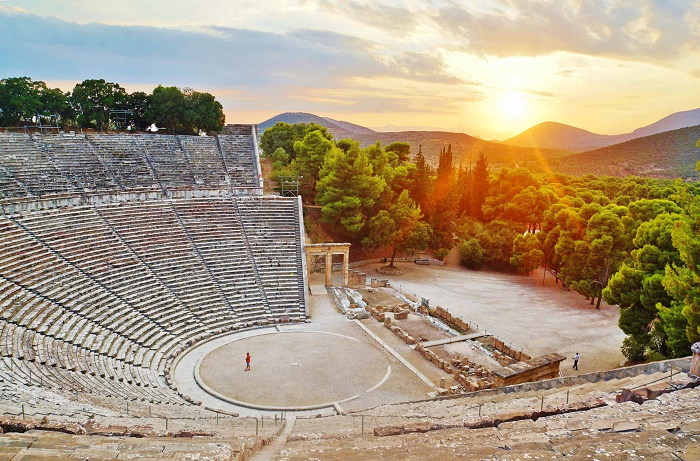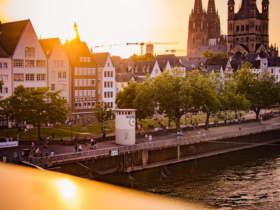For the ancient Greeks, celebrations in honor of Dionysus, the god of winemaking, plants and inspiration, were of great importance.
Associated with wildlife and agriculture, the god was depicted as a goat or a bull. Participants in ritual performances wore goat skins. Hence the term «tragedy» arose, translated from Greek meaning «goat’s song.» The cheerful noisy crowd at the feast of Dionysus was called «komos», from which the word «comedy» came. Initially, theatrical scenes were played only during the Great Dionysia from March 25 to April 1. In addition to actors, poets and musicians performed. Later, these religious rites turned into an ancient theater.
The central place of the theater was the orchestra — a round platform for the performances of artists. In Athens, the orchestra was located in front of the temple of Dionysus, and its center was necessarily decorated with an altar in honor of the divine patron. This element has firmly entered the theatrical culture of Greece: even non-religious performances took place at the altar. On the altar steps stood the main actor of the play, and later there was a flutist who created the musical accompaniment to the tragedies.
Places for spectators located in a semicircle in front of the orchestra were called theatrons. Spectators watched the performances sitting on the benches. For noble citizens, luxurious, comfortable seats with backs and canopies were installed. The spectators were divided into sections by aisles. To accommodate everyone, they built theaters for 14 thousand spectators.
Behind the orchestra was a room for actors, called skene. With the complication of the architecture of Greek theaters, the role of the skene increased. Paraskenias were attached to it — special structures to improve acoustics. The front part of the skene served for fastening the scenery. On it they painted the facade of an ancient temple for tragic performances or a residential building if they staged a comedy.
Actors could only be men. They wore masks to perform various roles. Since there were few actors, one person had to play several roles.






Оставить ответ